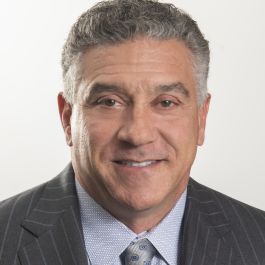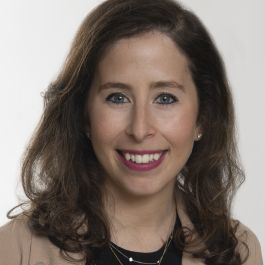When Rich Rodriguez thinks of Amherst homes, he thinks of Disneyland.
Kind of.
“Disneyland looks as new today as it did when it opened in 1955 because they’ve continually refurbished, updated and cleaned the park,” Rodriguez said.
To him, Amherst is doing something similar: The multi-vertical real estate company is building homes meant to last generations and like Disney, thinks about how to evolve its product and customer service offerings to enhance residents’ experiences and encourage loyalty and retention.
“In my view, Amherst’s operating philosophy is a unique position to take in homebuilding these days,” Rodriguez said.
And he would know: Before joining Amherst as the executive vice president, head of construction and head of Amherst Homes, Rodriguez built a successful career in the industry and is familiar with the approach many builders take.
“What we do is not the norm in the homebuilding industry, where the default is to take the cheapest, easiest path,” he said. “To get where we are takes a lot of effort and a focused approach. There’s a lot of cost and dedication that’s involved, but that’s where our culture comes into play.”
What we do is not the norm in the homebuilding industry.”
One reason the company can do things a bit differently is because it operates unlike any other real estate entity, said Natalie Barnard, head of business development and operations for Amherst Homes — Amherst’s build-to-rent vertical.
“There are a lot of companies that take on one or a few facets of the single-family residential housing ecosystem,” Barnard said. “We’re doing all of them and constantly innovating how we do it. It’s in our DNA to challenge the status quo on how real estate is managed, owned and operated.”
That means Amherst is involved with building, buying, renovating, selling, leasing, financing, and property management.
“This level of control allows the company to work in the best interests of its customers, which can build customers for life,” said Barnard.
As the company continues its foray into buying and building single-family homes to rent, the timing couldn’t be better, according to the team.
As many people flock from large cities to smaller, more affordable regions, there’s been a noticeable uptick in demand for housing, but the inventory just isn’t there. To Rodriguez, Amherst’s work is not only filling a need, but also modernizing an industry that hasn’t changed in decades.
“We’re the complete package,” Rodriguez said. “That allows us to innovate where others can’t because we’re not dependent on third parties or other entities. If we see that something is essential, we always ask if we can and should do it ourselves. Then, we figure out how to do it more effectively.”
To learn more about the current state of the real estate industry and how Amherst is shaking it up, Built In Austin spoke with Barnard and Rodriguez. They filled us in on what innovation means to their team — and why the company is poised for success that lasts as long as its homes.

What is Amherst’s mission? Why is it a unique company in the real estate industry?
EVP, Head of Amherst Homes, Head of Construction, Rich Rodriguez: Our company is very forward-thinking. In 2011 and 2012, we saw the gap in the market and the need for housing. We decided to enter the single-family rental space, which means we buy or build single-family homes, improve them if they need it, and then lease them to the resident, all while property-managing the homes. Amherst is unique in that it can cover the entire asset lifecycle. Plus, we provide investment analysis and advice.
We put a lot of value in our intellectual capital. We go where other companies can’t go — or are afraid to. We look to see how we can innovate in other areas of real estate that haven’t been changed for years, whether it be commercial or ancillary services that support the industry, like brokerage, sales, marketing — even public parks, and public and private partnerships.
VP, Head of Business Development and Operations, Amherst Homes, Natalie Barnard: We see housing as a space with unmet consumer demand. We provide it in a way that’s accessible, affordable, dependable, and high-quality in great neighborhoods with strong school districts. In doing so, we fill a need that’s been created by decades of housing policy. Our goal is to create customers for life, whether they choose to rent or own though our family of brands.
At our core, we are both data-driven and creative in how we solve the multi-faceted problems that face the residential real estate industry. We are an agile team who thinks through the lifecycle of our products, whether it is rental or retail, to provide value to our customers. And layered beneath everything we do is proprietary technology that feeds business intelligence back into our decision-making to improve operations and guide our decisions. All of this culminates in a technology-obsessed real estate firm that is unique in its culture of big thinkers and entrepreneurial solutions in a legacy industry.
We go where other companies can’t go — or are afraid to.”
Can you tell us a bit about what the real estate market looks like right now?
Barnard: We’ve seen consumer demand for single-family rentals increase as people want space, modern amenities, and professionally managed services at a price they can afford.
There was already a trend toward renting when credit standards made home ownership impossible for so many Americans after the global financial crisis. Since 2007, there’s been a 25 percent increase in rental households versus a four percent increase in owner households. We’ve seen a huge amount of leasing increase from out-of-market customers. That means people are moving from urban multifamily housing into single-family housing in suburban areas.
Rodriguez: We’re a real estate company, but we base our decisions on our robust data and a proprietary analytics platform. So, when we’re looking at where the market is heading, we start with our data. We’re currently in 30 markets — soon to open another five — and those weren’t random choices. We didn’t decide yesterday to open in these markets, but we’ve been watching the data, and it makes sense to go to those areas.
We always look to the data and our technology to see where we should be, and that’s where we go. I mean that physically, but I mean it intellectually as well.

During the pandemic, many people have decided to move from expensive cities to more affordable areas. What trends are you seeing right now? How is Amherst prepared to handle this shift?
Rodriguez: We look at where jobs are being created, and our system looks at safety, schools, proximity to commercial centers, quality of roads, and more. Even though we’re seeing a record-high number of people working from home, there is still a desire to go into hubs for work and to leave these hubs at the end of the day. Some markets are proving very difficult to purchase a home in right now, like Austin or San Francisco. People want to migrate to different cities, and they’re all looking for these factors in their new homes.
We used to get three or four applications per home, but now we’re between 10 and 15, depending on the city and type of home. That demand spurred the birth of Amherst Homes. We see there’s not enough product out there to meet demand, so we want to build ourselves into that cycle at an earlier phase and handle the purchase of land, development, and construction ourselves. In doing so, we’re helping add quality homes at affordable price points to the under-built U.S. housing market.
Meet the new it-cities
Let’s talk about what makes Amherst’s houses and neighborhoods special. How are they different from other newly built neighborhoods?
Rodriguez: I used to work for merchant builders, who would build new homes. The mindset so many builders have is that the homes they build need to last just one day past the warranty. Then, it’s up to the consumer to take it from there. Our approach is the opposite. We’re building homes that we plan to operate ourselves, and we need them to last.
The other piece we think about is the livability of our communities. We’re thinking of ways to get people’s cars off the street so children can ride bikes in their neighborhoods. That means we need to come up with ways that give the homes enough storage space so that people’s cars fit in the garage.
We’re thinking around corners about what we need to build so people can live in a really meaningful way.”
Barnard: We want to ensure that we’re putting in finishes that are modern and elevated but that also stand the test of time and are durable for the next 10-15 years. We build high-quality homes with a variety of floorplans, elevations, and efficient designs to maximize utility of space and modern amenities. We’re thinking beyond pools and gyms. We’re thinking about what people want. Consumer demands are shifting and will continue to shift, so we’re thinking about future demand and what we need to build so people can live in a meaningful way. For example, we know that people today often use Pelotons and in-home workout equipment rather than go to a gym. We are looking at how we can support those new lifestyle choices.

What do you find most exciting about where Amherst is heading?
Barnard: We offer real estate professionals a unique seat at the forefront of what’s next across multiple asset classes. This approach enables us to create a uniquely entrepreneurial culture within the residential real estate industry. We’re at an interesting point in the industry that includes a lot of new approaches to change the way things used to be done, so it’s a great time to come in and be a part of that, to build in a new way.
We approach everything with an entrepreneurial mindset, and there’s so much opportunity at Amherst. As an employee, you can tackle big problems and forge your own path. There are so many business verticals you can join within Amherst to get exposure to different functions and have a well-rounded real estate career. We’re looking for collaborative people who think differently and innovate on how things are done. We’re also committed to talent development, so the team members we attract have a home for their future careers in real estate or wherever their passions and skills might lie.
There’s something special about feeling like you’re running hand-in-hand with everyone across the company. Every person at Amherst is committed and excited to be here. You spend a lot of time around your coworkers, and I know I personally want to always be around forward-thinking, motivated, smart people, like the kind we have at Amherst.
I think people are going to look back on today and wish they joined us in our early innings.”
Rodriguez: I look at it this way: When I look back on some of the biggest companies with innovative ideas, I think, ‘I wish I could have joined Amazon in 1992. Or McDonald’s in 1965.’ That’s how I see Amherst. I think people are going to look back on today and wish they joined us in our early innings.
That makes recruiting extremely important for us, because if we bring in the wrong people, we’ll kill the culture. So, we take a lot of time to get to know people even before they join us, and then we nurture our talent and develop them. We want to get the right folks in the door, and once they’re in, they’re part of the family. It’s also the most fun part of the job because we get to tell our story over and over.
And when I tell our story, I have to sit back and realize I am very fortunate to be a part of this ride.









